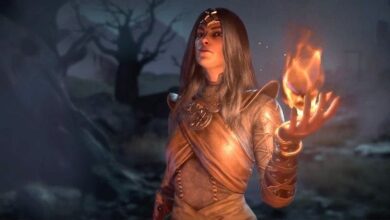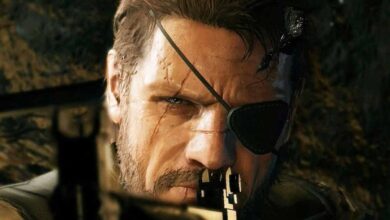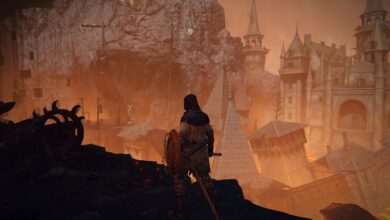Battlefield 6 Best Settings (PC)
The goal of this Battlefield 6 best settings (PC) guide is to maintain image clarity and reduce input lag while keeping the frame rate as high and stable as possible. The steps below focus on increasing the 1% low values by first identifying your system (GPU/CPU/VRAM) and then adjusting critical in-game settings. In competitive multiplayer, we focus on the trifecta of “stable 100–144+ FPS + clean visuals + low input lag.”
Battlefield 6 best settings (PC) – Quick Profile Approach
The first step is to set a target: 120 FPS at 1080p, 100+ FPS at 1440p, or 60–90 FPS at 4K. Adjust the texture quality according to your VRAM; medium/high textures are safer with 6–8 GB of VRAM, and high/ultra is safer with 10–12 GB or more of VRAM. Set the full-screen mode to “True Fullscreen/Exclusive Fullscreen” to eliminate the additional lag caused by the window compositor. If G-Sync/FreeSync is enabled, disable V-Sync in-game and manage sync in the driver; a fixed upper FPS limit (e.g., 118/141) will reduce tearing while keeping input smooth. On many systems, enabling Windows Game Mode and Accelerated GPU Scheduling (HAGS) will yield variable results depending on the card; experiment and choose a value that’s 1% lower, which works best.
Image Clarity and Post-Processing
For competitive performance, it’s essential to minimize blur and aesthetic filters. Turn off or minimize Motion Blur, Film Grain, Vignette, Chromatic Aberration, and Lens Flare; this significantly improves target tracking during motion. Depth of Field is only relevant for cinematic scenes; leaving it off during gameplay improves clarity. There are two ways to sharpen: If you have an in-game sharpening control, emphasize details with a light value like 10–20%; otherwise, use a driver-based sharpening like NVIDIA Image Scaling/AMD Radeon Image Sharpening. Don’t overdo it, as it can create noise.
Resolution, Scaling, and Upscaler
If you can’t reach your target FPS, try resolution scaling first. If the game has a built-in resolution scaler, a range of 90–95% will not significantly degrade image quality but will smooth out the frame rate. If the game offers an upscaler like DLSS/FSR/XeSS (if available), “Quality/High Quality” at 1080p, “Balanced/Quality” at 1440p, and “Balanced/Performance” at 4K are reasonable starting points. Light sharpening works well to compensate for the loss of sharpness when using DLSS/FSR. If no upscaler is available, lowering the native resolution by one notch (e.g., 1440p to 1260p) will appear acceptable on most monitors.
Shadow, Lighting, and World Details
The most significant performance drivers are shadows, volumetric effects, and screen-space rendering. Lowering shadow quality to “Medium-High” instead of “High” significantly increases FPS; reducing shadow resolution by one notch doesn’t affect shield reading. Setting volumetric fog and global illumination settings to “Medium” is the sweet spot on most systems. Screen-space reflections (SSR) and ambient occlusion (SSAO/HBAO) provide a sufficient sense of depth at “Medium” settings while maintaining a more robust 1% low. Leaving particle/effect quality at “High” maintains visual readability (explosion smoke, sparks); however, if you experience a drop in performance in busy scenes, turn it down to “Medium.”
Texture Quality and VRAM Management
Texture quality is directly tied to VRAM. With 6GB of VRAM, “Medium–High” is safe, with 8GB, “High,” and with 10–12GB and above, “High/Ultra” is safe. Set Anisotropic Filtering to 16x; it’s inexpensive and significantly improves ground/wall detail. For Mesh/Geometry and Terrain Quality, “High” is generally a good balance; enemy silhouettes and view distances remain sharp.
Aiming, FOV, and Camera Settings
On PC, setting the FOV between 85–95 is ideal for most players; on a 16:9 monitor, 90–95 improves environmental awareness and provides a balanced view without shrinking targets. Using ADS FOV on (Affected) helps strengthen muscle memory by maintaining consistent FOV while aiming. Set Uniform Soldier Aiming on (e.g., with a 133% multiplier) to maintain consistent rotation speed even as zoom changes. Mouse Raw Input should be on, Mouse Acceleration and Filtering should be off; find a balance between DPI and sens (e.g. 800 DPI, 0.8–1.2 sens) that will not cause micro vibration.
Latency Reduction
For NVIDIA users, NVIDIA Reflex (if available) On+Boost, AMD Anti-Lag/Anti-Lag+, and Intel Arc Low Latency reduce latency. Keeping V-Sync disabled in-game with NVIDIA Low Latency Mode “On/Ultra” and AMD Anti-Lag enabled in the driver panel generally yields a better 1% low. Avoid browser and video windows in the background; applications that hoard the CPU timer can cause large 1% low fluctuations.
Audio, Network, and Readability
Test 3D headset/surround options; on some systems, stereo and HRTF make it easier to distinguish enemies in crowded scenes. On the network side, stop background downloads, use a wired connection instead of Wi-Fi, and enable in-game network indicators (packet loss, latency) to monitor for issues. Adjust the interface scaling to the target resolution for readability; a very small HUD reduces visibility.
Testing Method: Locking 1% Lows
When adjusting settings, run a repeatable 3–5-minute test on the same map/route. A cycle of indoor, outdoor, and intense combat delivers the most accurate image. Monitor 1% Lows and 0.1% Lows for the average FPS; the setting that reduces stutter is the correct setting. Increasing the 1% Lows with small tweaks (e.g., volumetric to medium and low, shadow resolution down one notch) improves the overall feel more than the average FPS.
The goal of the Battlefield 6 best settings (PC) approach is to strike a balance of “eye comfort + low latency + stable frame rate.” Disabling blur filters and maintaining consistent FOV/ADS FOV improves target tracking; turning down heavyweight options like shadow/volumetric and SSR by one notch restores the 1% Lows. The remaining fine-tuning will be refined through short tests based on your hardware and target resolution.
Read More: Steam’s Popular Space Sim Is Free Until September 8th








